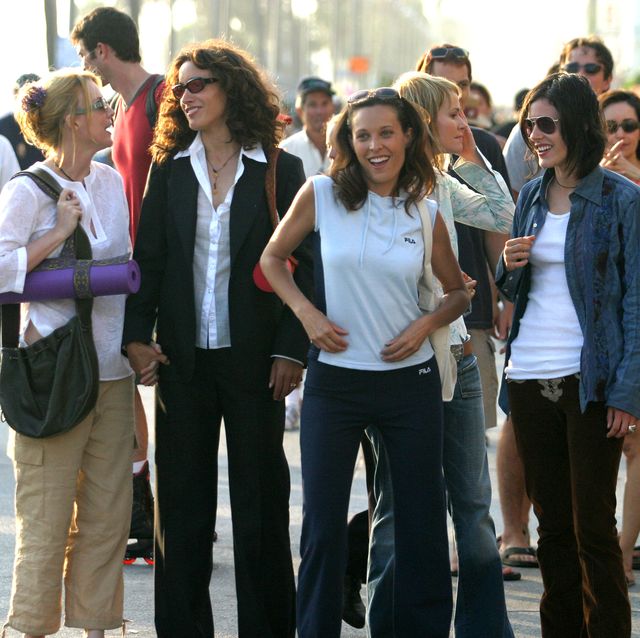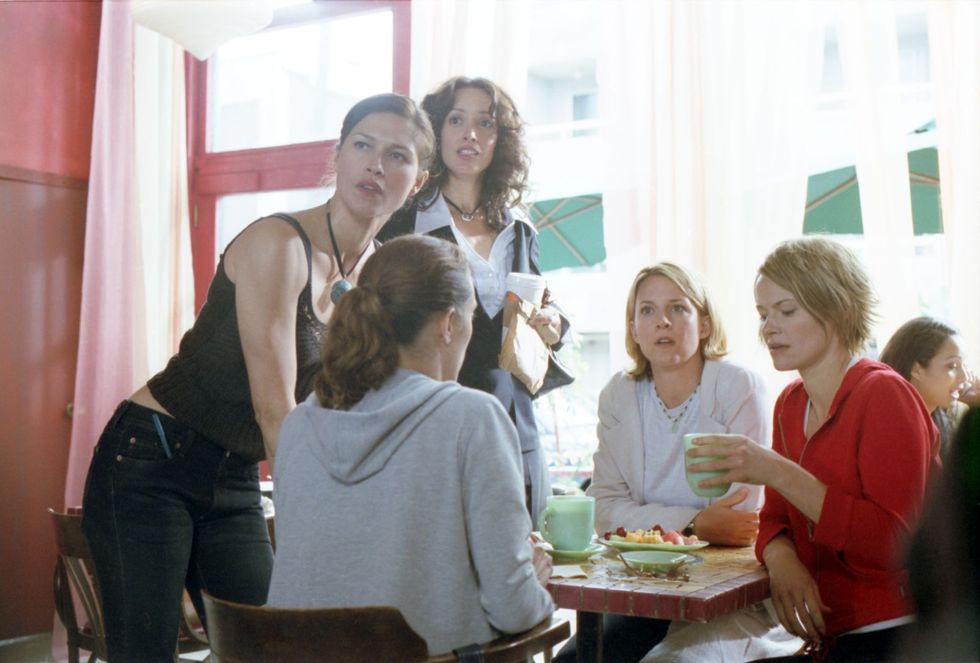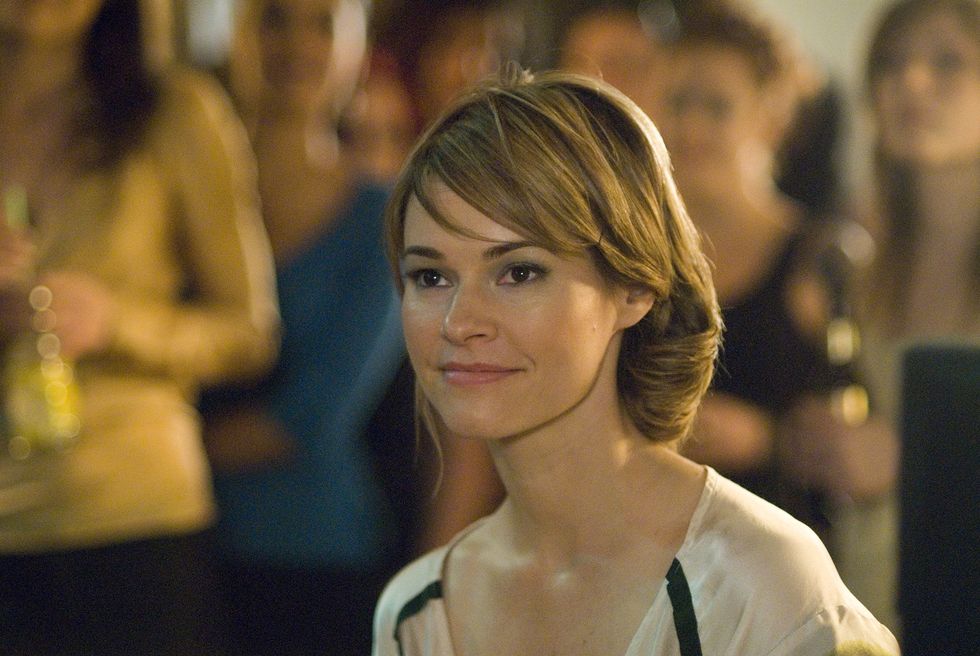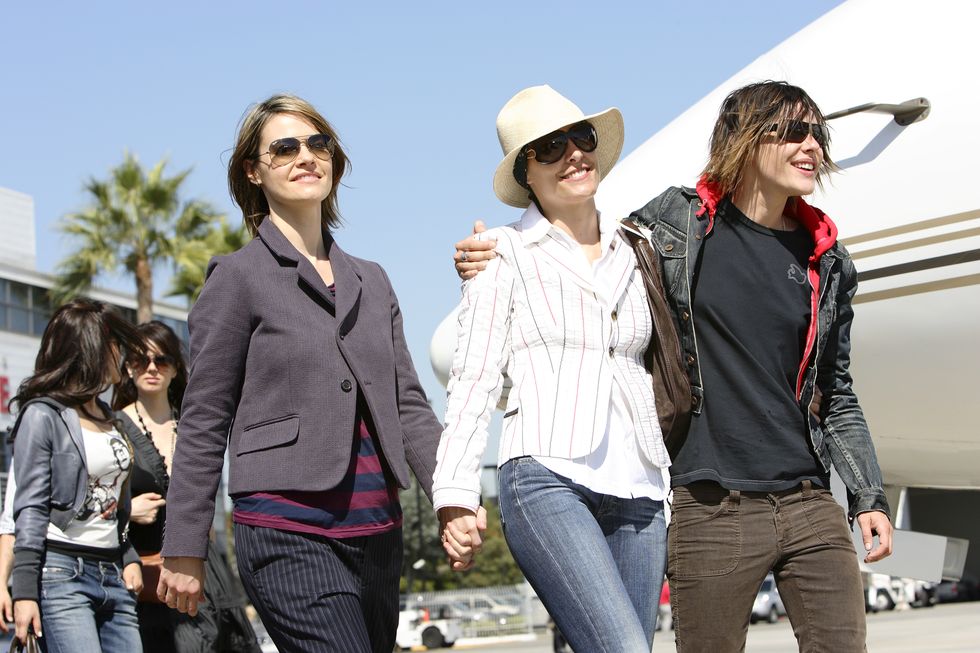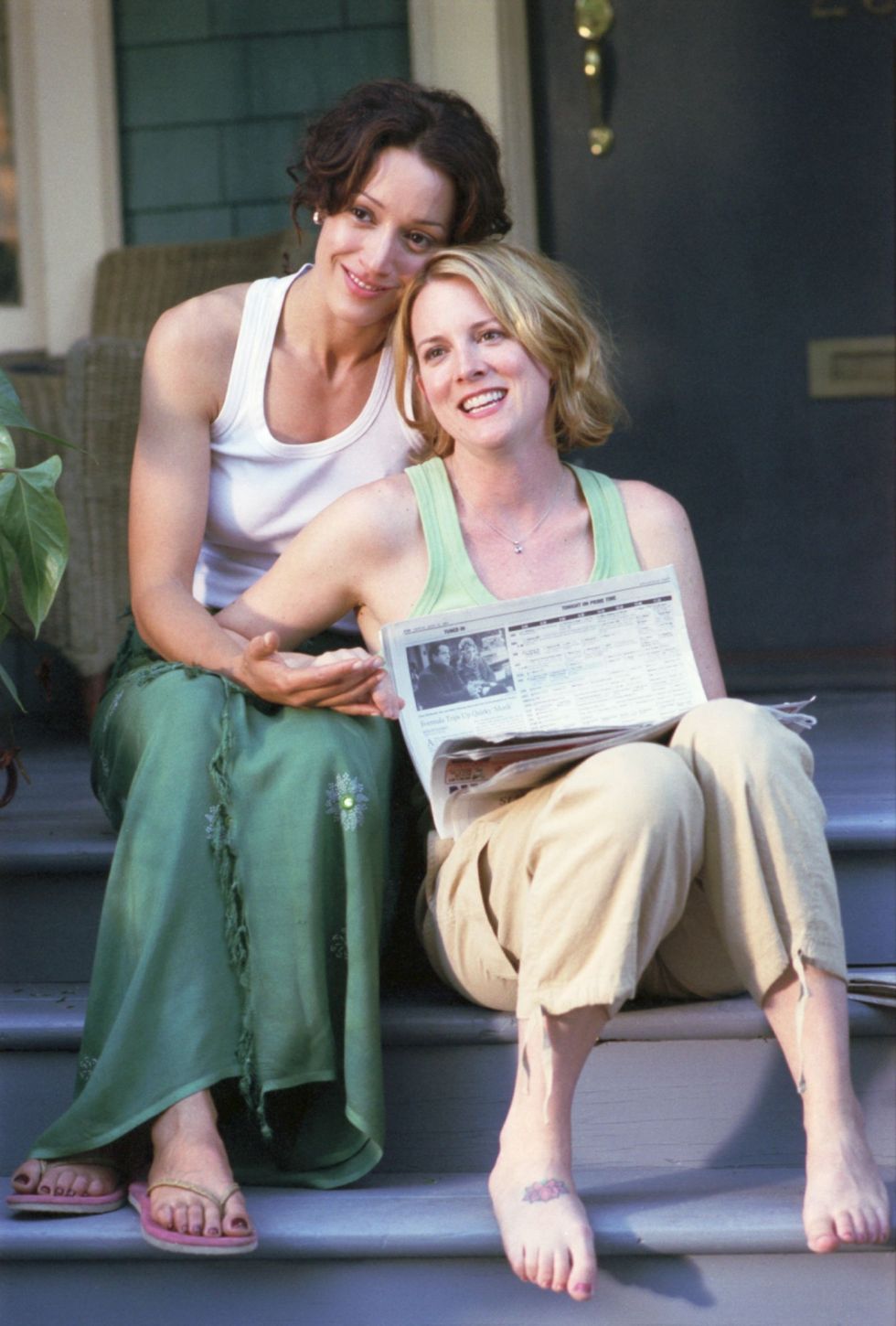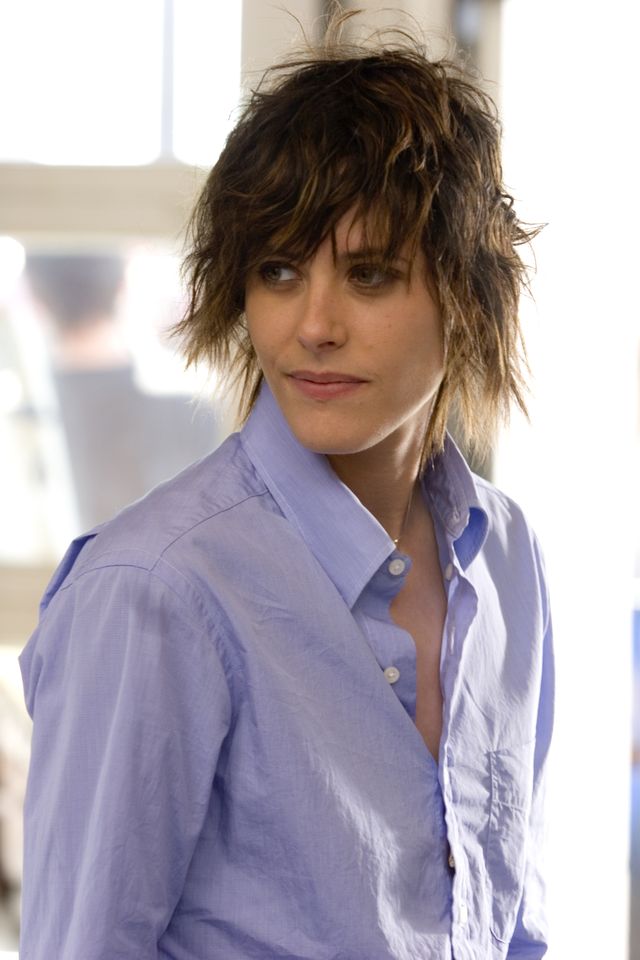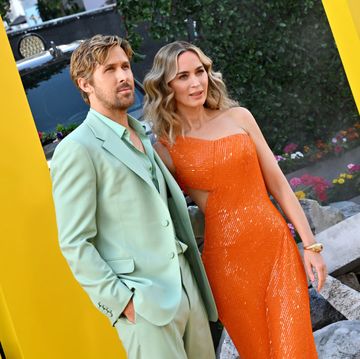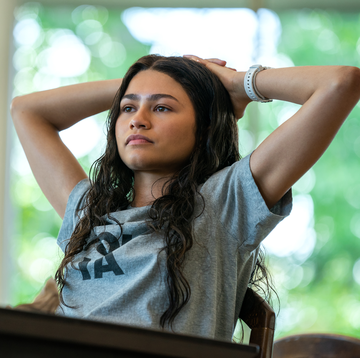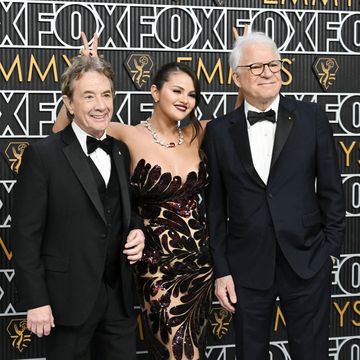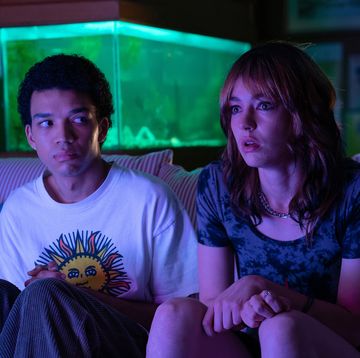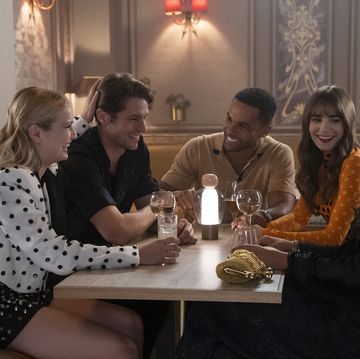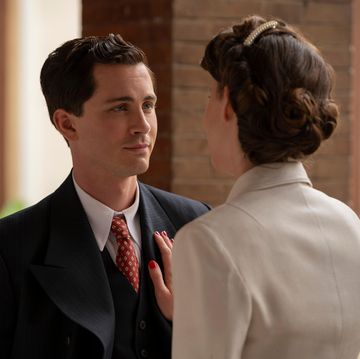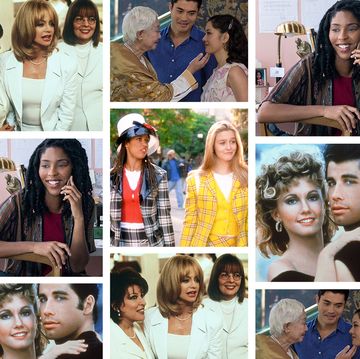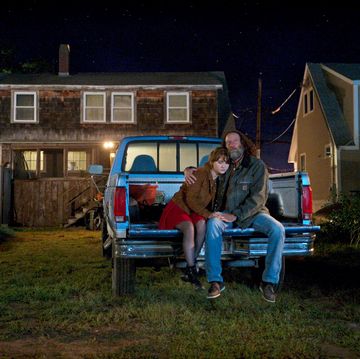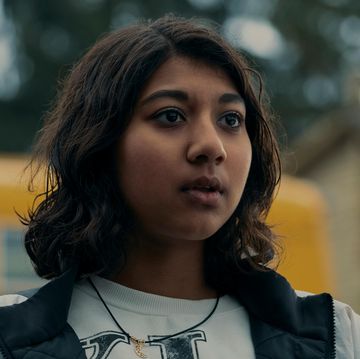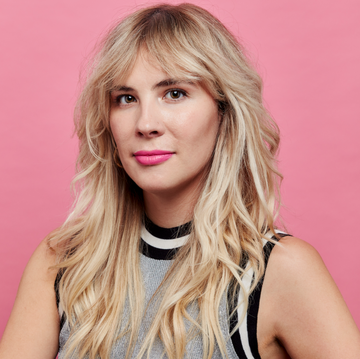Most queer people have an L Word story. Some had watch parties in their dorms circa 2004; others, as questioning teens, snuck the DVDs into their bedrooms years after the show aired. My first girlfriend insisted I watch before exploring anything else in queer pop culture, and a quick, nerdy Google search proves the show lives on in gender studies curriculum across the country. The L Word had serious problems with homophobia, transphobia, and biphobia (if there’s an LGBTQ-related phobia, assume it’s somewhere in this show), but the show—about queer culture in Los Angeles, the often-true stereotype that queer people tend to date within their friend circles, and the highs and lows of chosen queer family—is all we’ve had to represent queer lives for a long time.
More than 10 years after its final episode aired on March 8, 2009, the beloved Showtime series is rebooting in the form of The L Word: Generation Q. This new iteration is executive produced by Chaiken and showrunner Marja-Lewis Ryan, and original actresses Jennifer Beals (Bette Porter), Katherine Moennig (Shane McCutcheon), and Leisha Hailey (Alice Pieszecki) are back as stars and EPs too. The reboot also features new, refreshingly diverse additions to the cast, but before you latch onto the new series, it’s important to know how and where it all began.
If you want to become a dedicated fan of Generation Q, it’s not critical to watch the original—but you probably should anyway. Bingeing the original L Word doesn’t necessarily mean you need to scrutinize every single scene and plot point; if you’re trying to get through the whole series in a short period of time (or at least by the second or third episode of Generation Q), you’ll need to speed things up. Here’s a guide to watching the original “women who long, love, lust,” and the world they created long before Generation Q was a gay twinkle in Showtime’s enterprising eye.
How to watch: Very few TV shows need 100 percent of your attention. Skipping storylines doesn’t necessarily mean skipping entire episodes; think of them as subpar B plots you can skim over or put on mute while you online shop for Subarus. There are spoilers ahead, but that's the price of speeding through a show.
The essentials
Carmen and Shane, seasons 2 and 3
This romance is beloved by fans because Carmen (Sarah Shahi) is beloved by fans. Shane is the kind of character for whom you want the best, and Carmen is the best. Soak up this beautiful courtship.
Bette and Tina’s entire relationship, seasons 1-6
This is the relationship that arcs over all six seasons, and no, it’s not perfect. (It’s also extremely frustrating.) But when Bette and Tina (Laurel Holloman) fight, get back together, have a baby, and raise a baby, it’s not something you can ignore. Their whole relationship is an important through-line for the entire series, no matter how much it makes you want to go on a classic Bette Porter cursing rampage.
Bette’s controversial art exhibit, season 1 episodes 9-13
This plotline is important to follow because it has an effect on Bette’s high-power art curator career as well as her romantic life (no spoilers, but when you meet a character named Candace, look up from the Buffy the Vampire Slayer fan-fiction you’re writing).
Jenny and Marina, season 1
This romance starts out as a series of secret bathroom trysts and turns into the first significant queer romance for Jenny (Mia Kirshner). When the series starts, Marina Ferrer (Karina Lombard) is the mysterious European owner of beloved lesbian hangout The Planet, and she definitely knows how to get what she wants. This mess of a relationship is altogether destructive and completely enticing.
Alice and Dana, season 2
This is the sweet part of Alice and Dana Fairbanks’ (Erin Daniels) relationship, even when they're hiding it. Dana, the long-closeted professional tennis player, is the absolute center of chatty radio personality Alice’s life. There’s real love from Alice, and because she’s another character we want the best for, you should savor this one, too.
Alice and Tasha, seasons 4-6
This relationship is another where we see Alice at her happiest, even though she and Tasha (Rose Rollins) are total opposites. Tasha is an officer in the military returning from Iraq, and there are some “Don’t ask, don’t tell” elements to her story that were relevant to real-world issues in the early 2000s.
Papi, season 4
This season we meet Papi (Janina Gavankar), the character with the busiest dating life outside of Shane. She's slept with more women on Alice’s famous “chart” than anyone else and is one of the few main characters of color on the show.
Peggy Peabody, season 3 episodes 10 and 12
Holland Taylor is one of the brightest lights of this series. She plays Peggy, the wealthy mother of main character Helena (Rachel Shelley), and makes even the most confident power lesbian, Bette, shake in her boots. Peggy holds the purse strings to the Peabody Foundation, and it’s a lot of fun to watch her hold this over her financially irresponsible daughter.
Dawn Denbo and her lover Cindi, season 5 episodes 4-11
Dawn Denbo (Elizabeth Keener) is a character to know. Not only does she become Kit’s (Pam Grier) biggest nemesis over the The Planet, but she has one of the most iconic lines of the series. Once you watch, you'll be in on a legendary queer reference for the rest of your life.
What to skim
Baby "Tibette," season 1
Yes, you need to know that Bette and her partner Tina are trying to have a baby. No, you don’t need to know all the ups and downs of this journey, because it gets annoying and problematic. At one point, Tina expresses discomfort about having a black sperm donor and raising a child of color. If you want to recap that whole mess, consult Autostraddle’s podcast, “To L and Back” about episode 5 of season 1, “Lawfully.” You can start paying more attention to the baby storyline in season 2.
Dana’s entire breast cancer storyline, season 3 episodes 2-11
Yes, pay attention to the beautiful tennis-star angel that is Dana. Pay attention to her Subaru sponsorship and her cute, relatable realization that she is, in fact, very gay. But Dana suffering from a horrible disease that shouldn’t have been written into the show? It’s devastating and brings the whole thing down.
Kit and Angus (begins in season 3)
The whole relationship between Angus and Bette’s older sister Kit is a little twisted, especially because Angus started out as a nanny for Bette and Tina. He begins the show as a character of little significance, it seems, but then becomes a regular member of the friend group, and his placement there always seems awkward. He’s also an eye roll-inducing character, and you'll soon learn why.
Catherine Rothburg and Helena, season 4 episodes 6-12
The high-stakes gambler Catherine Rothberg (Sandrine Holt) is a fun character who fulfills lesbian Oceans Eleven-type fantasies, but this relationship is drawn out as a way to give Helena something to do for a bunch of episodes. It's important to know the gist, but you don’t have to pay attention to every single detail.
Jenny’s directing job, season 5
To skip the entire plot of Jenny directing Lez Girls, the adaptation of her book, is bad advice for anyone who wants to follow her entire arc. But once she actually takes full control of the film in season 5, things get out of control. It’s too much Jenny.
What to watch with a raised eyebrow
Max’s transition and ensuing storyline, seasons 3-6
Max enters the story as Moira, Jenny’s girlfriend from the Midwest. Moira transitions and goes by Max, who becomes a regular on the show. Max’s story is hard to watch through the lens of a 2019 viewer; it's the reason fans have been critical of the show’s handling of transgender stories and why the creators of Generation Q have been so open about fixing past mistakes. Without giving away too many spoilers, Max’s character gets the shaft in every way possible when it comes to his professional and romantic pursuits and mental health.
Kit and Ivan, season 2 episodes 1-2
Kit’s treatment of Ivan in the beginning of their courtship doesn’t play well. Kit has weird reservations about Ivan’s gender identity, and frankly, it’s uncomfortable.
Bette and Angie, season 3 episode 12
Bette and Tina have some custody arguments over their daughter, Angie, and there’s a scene at the end of season 3 that characterizes Bette as a woman who kidnaps her own child. It makes a complicated character more confusing than she needs to be, and feels out of character for a woman who makes a lot of mistakes but isn’t vindictive unless she thinks she’s helping someone.
What to skip altogether
That whole thing with Tonya, season 1 episodes 11-13
When Dana falls in love with the event planner, Tonya, it’s a sad day for queer women everywhere. Dana and Tonya’s astrological signs, whatever they are, are so incompatible it hurts. Skip Tonya.
Jenny’s writing class, season 2
Jenny is very wrapped up in her writing career, so there are a lot of B-plots that involve her work. As much as comedian Sandra Bernhard is worth watching, this whole plot with Jenny and her prickly writing teacher isn’t central to the story. (This writer stands by her Jenny opinions—she's a polarizing character.)
Mark (!), season 2
When Jenny and Shane move in together and look for a third roommate, a filmmaker named Mark is their pick. There's an entire plot of Mark making a gross film of his lesbian roommates, and it just gets worse and worse. It does nothing for the story and will only trigger queasy feelings.
Bette and Barbra Grisham’s almost-love scene, season 3 episode 4
Bette makes a lot of mistakes, and this scene, with the senator Barbara Grisham (Dana Delany) in D.C., is clearly written to show that she doesn’t always do the wrong thing. Unfortunately, it only adds more unnecessary detail to the already complicated web (or chart, if we’re thinking like Alice) of Bette and Tina’s relationship.
Tina and Henry, season 3 episode 9-11 and season 4
Any time Henry (Steven Eckholdt) come up in this series, it’s fine to skip him. As one of Tina's flings, he makes Bette mad and that’s kind of fun, but most fans will agree this is a boring plot and no one cares about him.
Most of season 6
The show really goes off the rails here, and a lot of cringe-y storylines involving Max pop up. There’s also this whole thing between Jenny and Shane that… why? The best strategy is to watch the final two episodes so you can theorize about what happens to Jenny and leave it at that. And I'm turning off my Twitter notifications…now.
